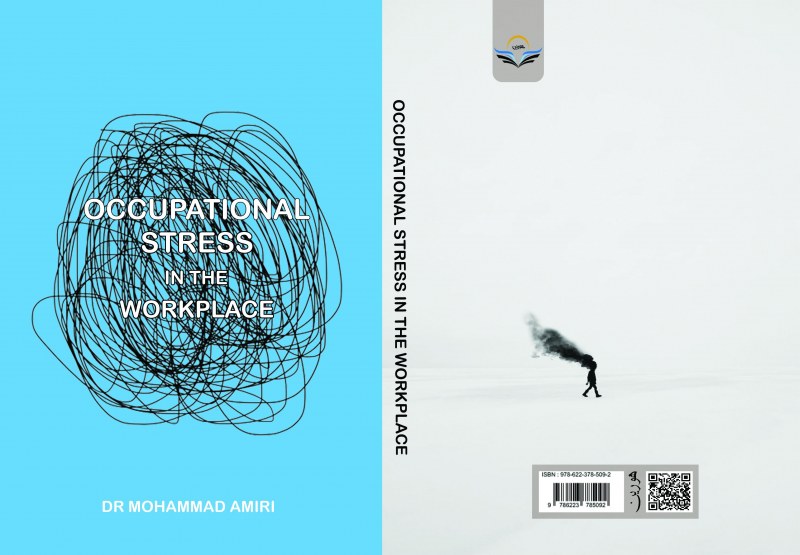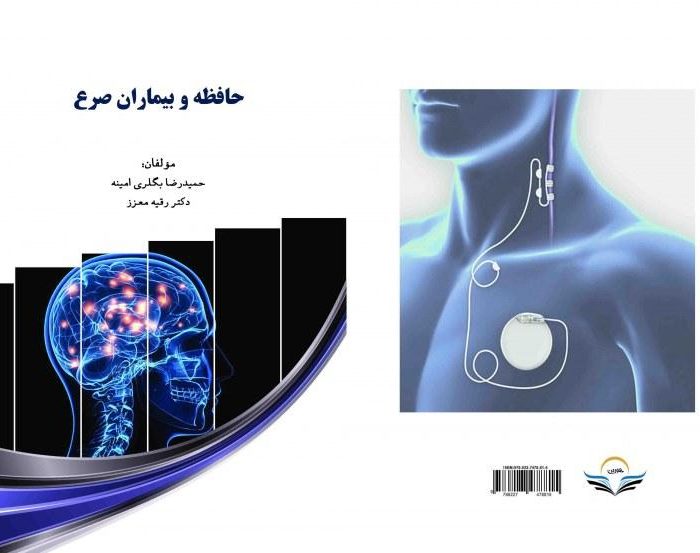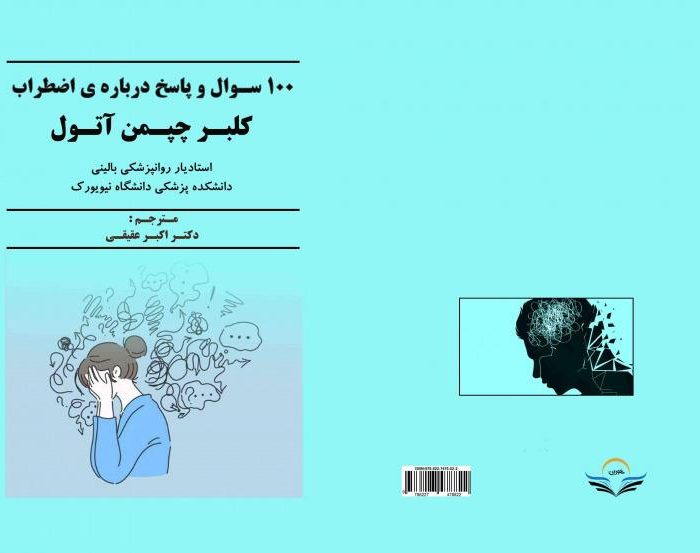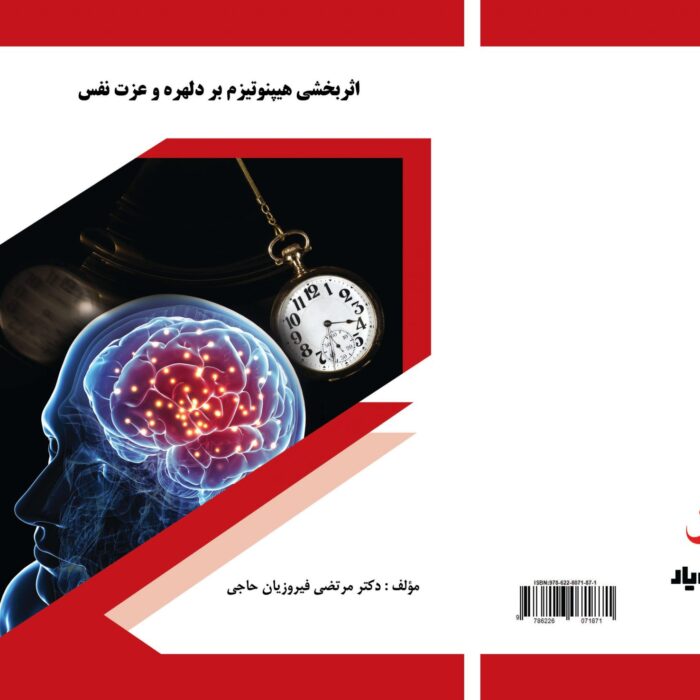کتاب OCCUPATIONAL STRESS IN THE WORKPLACE
- صفحه نخست
- رشته ها
- - علوم انسانی
- روانشناسی
- کتاب OCCUPATIONAL STRESS IN THE WORKPLACE
کتاب OCCUPATIONAL STRESS IN THE WORKPLACE
183,400 تومان
| تعداد صفحات | 131 |
|---|---|
| شابک | 978-622-378-509-2 |
Acknowledgments 5
CHAPTER 1 7
INTRODUCTION 7
Introduction 7
CONCEPT OF STRESS 11
TYPES OF STRESS 13
OCCUPATIONAL STRESS 14
STRESS MANAGEMENT 15
DEFINITIONS OF STRESS MANAGEMENT 16
STRATEGIES OF STRESS MANAGEMENT 17
MODELS RELATING TO STRESS MANAGEMENT 18
TECHNIQUES OF STRESS MANAGEMENT 20
REVIEW OF LITERATURE 23
CHAPTER 2 37
LEVELS AND TYPES OF OCCUPATIONAL STRESS 37
Introduction 37
TYPES OF OCCUPATIONAL STRESS 43
CAUSES OF OCCUPATIONAL STRESS 47
STRESS 49
MEASURING OCCUPATIONAL STRESS 55
CHAPTER 3 59
MAJOR CAUSES OF OCCUPATIONAL STRESS 59
Major Causes of Occupational Stress 59
CHAPTER 4 67
OCCUPATIONAL STRESS AND WORK PERFORMANCE 67
Introduction 67
IMPACT OF OCCUPATIONAL STRESS ON ORGANIZATION 76
FACTORS LEADING TO DIFFICULTY AT WORK IN THE WORKPLACE 80
CHAPTER 5 81
MANAGEMENT STRATEGIES TO COPE WITH OCCUPATIONAL STRESS 81
Introduction 81
OCCUPATIONAL STRESS MANAGEMENT AT THE 85
ORGANIZATIONAL LEVEL 85
OCCUPATIONAL STRESS MANAGEMENT AT THE INDIVIDUAL LEVEL 94
COPING AND MANAGEMENT STRATEGIES TO PREVENT OCCUPATIONAL STRESS 98
STRATEGIES 110
CONCLUSION 112
SUGGESTIONS AND RECOMMENDATIONS 113
REFERENCES 120
About the author 130
CONCEPT OF STRESS
The historical beginning of the study of stress can be traced to Walter Cannon (1915) and Hans Selye (1977) who can be credited for establishing the earliest scientific basis for the study of stress by using animal studies. Cannon measured the psychological responses of animals to external pressures such as heat and cold, and surgical procedures, and then extrapolated from these studies to human beings. (1939). Selye’s work on stress emerged from his lab experiments as well as his scientific work as a medical student in Prague.
The term “stress” as it is presently used was conceived by Hans Selye in 1936, who defined it as the non-specific response of the body to any demand for change, later changing it to the “rate of wear and tear on the body”. Later researchers explained stress in general as a physical, psychological, and emotional response to events that cause physical or mental tension. According to Richard S. Lazarus (1966), stress is a situation when one comprehends that one may not be able to muster the personal and social resources required to fulfill one’s needs and demands. For Tom Cox (1993) too, stress denotes a psychological condition that emerges with the realization of the discrepancy between one’s occupational demands and one’s skills to deal with those demands.
Deo Strumpfer (1983) distinguished between “good” and “bad” stress. Distress or “bad” stress implies detrimental and disagreeable demands on the individuals while “positive” stress, i.e., eustress, (derived from the Greek word ‘en’ meaning good) points to a pleasing and easy variety of stress, its illustration being a employee who thrives in a competitive or demonstrating work environment even though stressful. D. S. Krantz, N. E. Grunberg, and A. Baum (1985) speak of stressors as stimuli that make demands on an organism which then needs to adapt to the stimuli. Stress is a circumstance where occupational factors relate to the employee’s change in his or her physical and psychological condition.4
TYPES OF STRESS
Stress has varied forms. Eustress can be defined as good and positive stress which provides immediate energy and motivation for people to do their work. Eustress is supposed to increase the productivity in an organization. Distress, on the other hand, is otherwise known as bad stress and has negative consequences. In this type of stress, the body and mind experience an uncomfortable feeling when the normal routine is constantly adjusted and altered. Distress decreases the level of motivation and results in a decrease in the quality of performance. Acute stress is the type of stress that comes immediately with a changed routine. It usually involves an immediate and intense reaction of body and mind to a significant threat or challenge but it passes quickly. Chronic stress occurs if there is a constant change of routine week after week. This is dangerous and can lead to health problems of different types. The other type of negative stress is called hyper-stress which comes when a person is required to accept more than one can take. A stressful job will cause that person to face hyper-stress. Hypo-stress is an insufficient amount of stress. A person who is continuously bored experiences this type of stress called hypo stress. Stress is thus, an emotional and physical strain on the body. And one of its most common forms is occupational or job stress.
OCCUPATIONAL STRESS
Occupational stress is stress related to one’s work. According to WHO (2007), the stress related to work is the one faced by people in response to the work demands and various types of pressures that do not correspond to their level of knowledge and capability and which thus, call into question their capacity to handle their work pressures.
In the same way, H. K. Mahajan (2013) defines occupational stress as the harmful physical and emotional response that occurs when the demands of the job exceed the capabilities, needs, or resources of the worker.
Jose Rivera (2018) defines it as a condition in which a person experiences a sharp intensity of anxiety, mental fatigue, and other symptoms. He also adds that certain professions and jobs may entail conditions that cause more stress than others.
Overall occupational stress is defined as consisting of the harmful physical and psychological effects on individuals that crop up when there is inconsistency between demands of the work environment and individual needs, abilities, and resources. Most people experience some episodic short-term stress due to events in their workplace but it is not harmful for them. However, if the stressful conditions persist for a long time, there may be serious physical, psychological, and social consequences.
Occupational stress may occur due to heavy workload, lack of clarity regarding one’s occupational tasks, job expectations, etc. Some of its main symptoms are tension, inability to concentrate on work, feelings of excessive tiredness, irritability, etc. Hence, stress is a complex phenomenon and can be explained in several ways, but in simple words, it is the wear and tear or fatigue of everyday life.
STRESS MANAGEMENT
Today Stress Management is given much attention, specifically in the corporate sector, more so in Information Technology organizations. Occupational stress is a prevalent and costly problem in every organization. Therefore, today, majority of the organizations are turning to stress management to overcome the problem of occupational stress. The principle of stress management is being followed for the improvement in their response to stress and also for enabling the organization to reduce workplace stressors.77
The major aim of stress management is to prevent and reduce occupational stress among employees and the organization. Various methods are being followed to reduce occupational stress of employees, such as – biofeedback, meditation and massage, and counseling to identify the suitable stress management method for employees. There are many solutions to cope with certain situations, even though there are some adverse situations that cannot be controlled. Implementing effective stress management principles is something that makes the work life of employees run a little more smoothly. It is important to implement stress management techniques or principles in the work life of employees.
DEFINITIONS OF STRESS MANAGEMENT
In general, stress management includes mechanisms and techniques that are aimed at arming a person with effective methods and means to cope with psychological stress. According to John Sichel (2016), stress management is a process that controls the occupational stress of employees. It may include practicing daily meditation, identifying releasing activities, or a combination of multiple techniques used to reduce occupational stress. Interventions to reduce the impact of stressors in the workplace have been defined by the Oxford University Press Glossary (2015). An individual focus is aimed at increasing an individual’s ability to cope with stressors or by stress management programs with an organizational focus that attempts to remove the stressor in a role. Gale Encyclopedia of Medicine (2008), has described stress management as a technique that would help people to learn about stress for controlling and identifying the specific symptoms of stress in their lives.
STRATEGIES OF STRESS MANAGEMENT
According to J. E. Bower and S. C. Segerstrom (2004), there are so many techniques and strategies to cope with occupational stress such as physical fitness, reading books, relaxation, cognitive therapy, meditation, yoga, attending conferences related to the reduction of stress, listening to music, etc. According to Louise Thomson (2002), the techniques of stress management consist of prevention, timely reaction, and treatment of the effects. Stress Management techniques will tend to differ based on philosophical paradigms followed by an organization.
MODELS RELATING TO STRESS MANAGEMENT
Transactional Model
Stress can be thought of as resulting from an “imbalance between demands and resources.’’ or as occurring when “pressure exceeds one’s perceived ability to cope. Stress management was developed and premised on the idea that stress is not a direct response to a stressor but rather one’s resources and ability to cope with or mediate the stress response and are open and responsive to change, thus allowing stress to be controllable.45 First of all, to develop an effective stress management program, certain factors need to be identified. These factors are central to a person for controlling his/her stress. There is a strong need to identify intervention methods that effectively target these factors. The interpretation of Lazarus and Folkman focuses on the transaction between people and their external environment known as the transactional model. The models conceptualize stress as a result of how a stressor is appraised and how a person assesses his or her resources to cope with the stressor. The model breaks the stressor-stress link by proposing if stressors are perceived as positive or challenging rather than as a threat, and if the stressed person is confident that he or she possesses adequate rather than deficient coping strategies, stress may not necessarily follow the presence of a potential stressor. The model proposes that stress can be reduced by helping stressed people change their perceptions of stressors, providing them with strategies to help them cope and further improve their confidence in their ability to do so.
Health Realization Model
Scholars like D. H. Barlowis advocated the health realization model of stress. According to this model, stress does not essentially follow the existence of a potential stressor. The health realization model focuses on the nature of thought rather than focusing on the individual’s appraisal of so-called stressors about his or her coping skills (as the transactional model does). Stress results from assessing oneself and one’s conditions through a mental filter of insecurity and negativity, whereas a feeling of well-being results from approaching the world with a “quiet mind” as per this model. This model suggests that helping individuals under stress to understand the nature of thought, especially providing them with the ability to recognize when they are having negative thinking helps them, disengage from it, and have access to positive feelings and thinking, all these will reduce their stress.3
TECHNIQUES OF STRESS MANAGEMENT
According to T. Cox, A. Griffiths, and S. Leka (2004), several techniques can manage occupational stress. These include:
Primary prevention, which involves decreasing stress by a) Ergonomics, b) environment design c) Organizational and management improvement.
Secondary prevention involves decreasing stress through Education, and Programs.
Tertiary prevention entails decreasing stress through improving the management system.
According to James Ronald Webster, managers play an important role in identifying and managing stress within the organization. So the strategies of stress management include: a) Recognition of employee and team achievement b) Treating employees with respect c) Formulating conflict management strategies according to circumstances d) Consulting the employees when they are feeling anxiety and e) Involving participation of employees in making decisions of organizations.
According to Soni Kushwaha (2015), the techniques of stress management include:
- A) Becoming knowledgeable about stress and its impact
One of the important things in stress management is understanding the stress, process, and impact of stress. persons should identify stress find the level of stress and make a plan for reducing the stress.
- B) Changing the lifestyle
Reducing smoking, having regular meals, always beginning the day with breakfast, having a proper diet, reducing the intake of alcohol, doing meditation, and adopting yoga as a way of life
- C) Managing one’s time
Making a plan for one’s work and distinguishing between what should be done and what would be important to do.
- Donatelle (2009) explained various stress management strategies adopted by the management. These strategies are:
- a) Knowledge about stress
A person should know about the concepts and symptoms of stress to prevent check negative impacts of stress in the workplace.
- b) Exercise (Physical fitness)
Exercise will help people to reduce and cope with stress. Non-competitive exercise like walking, running, swimming, jogging, etc. neutralizes the impact of stress.
- c) Time Management
Is the way to control and analyze stress. The lack of time management causes stress among people at the place of work. Through time management people can prevent stress.
- d) Meditation
This means focusing on the positive aspects of life by closing the eyes and clearing the mind of negative thoughts.
Apart from this, management can improve the employees’ ability to deal with difficult work situations through stress management training programs and employee assistance programs. Therefore, the process of stress management is performed by removing stress factors or by training the employees to battle the conditions that create stress in the workplace. The stress management process and its implication at the workplace is that it results in more creativity and quicker cursor movement for achieving organizational goals. The HR management through a better recognition and management of stress factors can impart training to the management and employees and thus prevent negative stress and its effects.
| تعداد صفحات | 131 |
|---|---|
| شابک | 978-622-378-509-2 |






